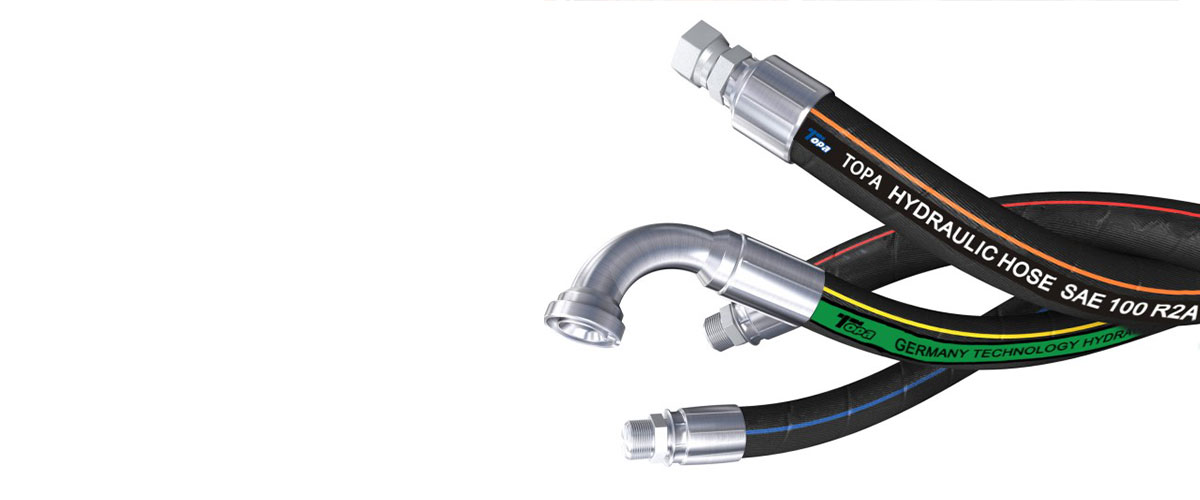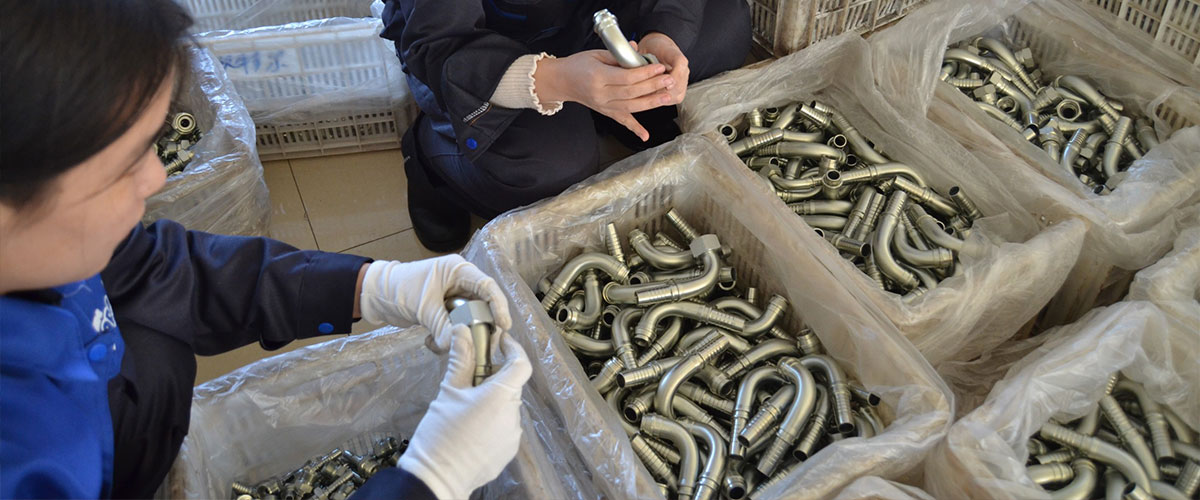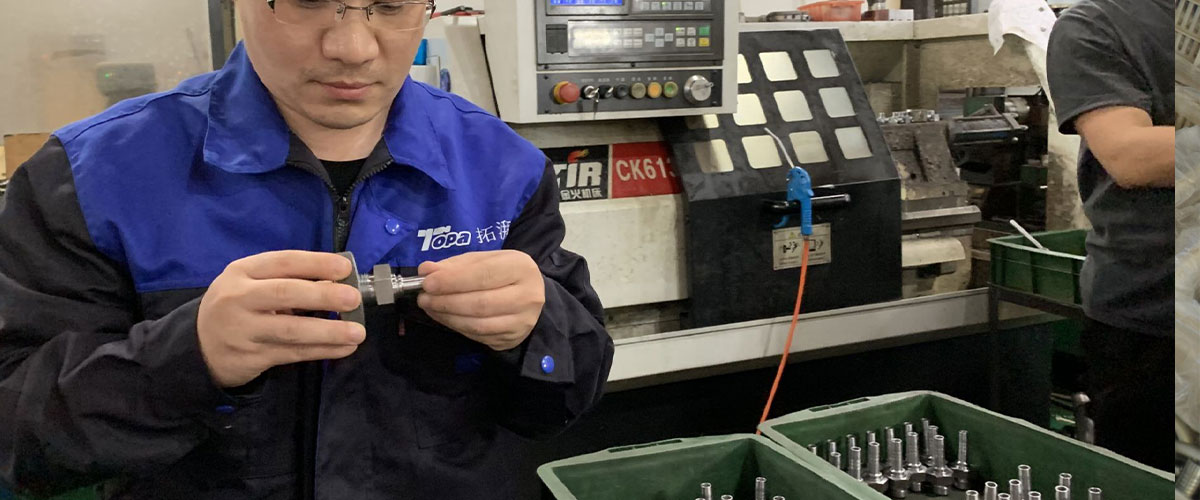uickly decrease the efficiency of the whole hydraulic system and even pose a major safety issue, all these just caused by a wrong hydraulic hose fitting!
What do you have to pay for a wrong hydraulic hose fittings!
1. Lose the hydraulic fitting’s cost
2. Lose the hose and other parts cost which used with this wrong hose fittings
3. When the machine stops, you have to stop work and maintenance – affecting the output of the construction period, your boss will think that your purchasing ability is low and affect your career development!
4. The hydraulic hose fitting is pulled off from the hose, causing casualties. The company has to compensate the workers and is very dissatisfied with the quality of your purchase!
Hydraulic joints are widely used in hydraulic hose systems in various industries such as military, energy, petrochemical, electric power, ships, automobiles, rail transportation, engineering machinery, mining, metallurgy, steel mills, marine engineering and other industries.
It is used to connect hydraulic hoses, tubes, and pipes to pumps, valves, cylinders and other parts of the hydraulic system!

When purchasing, please note the following:
1. Pressure rating
The high-intensity pressure that the hydraulic connection can bear. If the high pressure hydraulic fitting has tracheotomy, small holes or the pressure is too high to withstand such a large pressure, the impact force caused by blasting is quite large.
Select hose end fittings such that your needs for flow and pressure losses are satisfied and you will not be in danger of damaging the fittings hydraulic when operating at 200% of your highest expected pressures.
When selecting the hose joint, it is required that the maximum working pressure of each hydraulic fitting connection is at least equal to the maximum set working pressure of the whole hydraulic system, not only the outlet pressure of the pump, but also the starting pressure of the overflow valve. Therefore, in the design of complex hydraulic hose lines, the best way to get the practical pressure is to measure it on site. The working pressure of the system has been set. After that, check the maximum working pressure of each selected hydraulic tube fittings
How to ensure that the hydraulic pipe fittings you choose can withstand high pressure?
TOPA hydraulics controls from the following aspects:
(1)materials:
Most common steel hose fittings are made of plastic, steel, stainless steel, or brass.
Importantly, the material used for the hose pipe fitting defines its properties.
Steel fittings are more durable and improve the resistance to the heat. For example, carbon steel fittings can withstand the temperatures from -65°F to 500°F.
Stainless steel fittings are used when the temperature range required for the job is -425°F to 1200°F. They are an excellent choice for highly corrosive environments. Usually, they are rated up to 10,000 psi. However, the high price makes them less affordable.
Brass fittings are less strong and durable than stainless steel. They can provide a leak-free operation. Brass fittings temperature range is -65°F to 400°F.
They accommodate pressure up to 3000 psi, but lower pressure ranges are usually recommended

A: TOPA selects steels of well-known brands and inspects their quality certificates to ensure compliance.
B: Use solid steel rods as raw materials for processing, which will take more time, but this way, The hydraulic joints produced can withstand higher pressures than those with hollow pipes as raw materials.
(2) Processing technology
A: Hot forging process is very important, hot forging can make the steel fittings stronger
B: Precise finishing to ensure that the sealing surface matches exactly!

(3) The size is correct
Strictly check the first sample, fully comply with the drawing data, and then mass-produce. The China hose fittings produced in this way have small tolerances, good tightness, and are not likely to leak when subjected to high pressure.

2. Compatibility with interfacing components
One end of the hydraulic hose connector is crimping to the hose, and the other end is connected with other components with threads.
If it is incompatible with the component to be connected, it will directly lead to failure to connect or leak!
Pay attention to the following points when selecting hose threads fittings:
(1)Threading
Currently the most used thread NPTF / NPT / JIC / SAE / Metric / BSPP / BSPT, ETC.
To ensure that they have the same thread type and size, they can be screwed together.
(2)sealing options
Currently commonly used sealing forms: 37 degree taper, 60 degree taper, 24 degree taper, flat, spherical, etc.
The female and male fittings must have the same taper so that they can be closely attached together to avoid leakage!
If you need a sealing ring, please pay attention to the material and size of the sealing ring!
3. Ease of connection/disconnection
If frequent replacement is not required, more consideration is given to safety and economy
4.Market availability and cost
Even new hydraulic fitting, if it was selected wrong, can cause leaks problems. Picking a hydraulic fitting sometimes feels overwhelming, if you follow our simple guide, it should not be a problem anymore.
Do you agree with the above opinions on how to choose hydraulic hose fittings?
Welcome to contact us to tell us your idea!.
Below is our hydraulic flange video:
https://youtu.be/wdGedkPy3qk
Below is our hydraulic adapters video:
https://www.youtube.com/watch?v=ZzIbmR1jksM
Below is our one piece fittings video:
https://www.youtube.com/watch?v=Ugy5MiacYTQ
Please follow us here, we always upload hose and fittings pictures and videos:
Linkedin
https://www.linkedin.com/in/hosefittings/
https://www.facebook.com/hydraulichoseandfitting
https://www.instagram.com/topahydraulic/
Youtube:
https://www.youtube.com/channel/UCs6AqzYtYyVngJH_LQ2yOfQ/
Post time: Oct-14-2020

